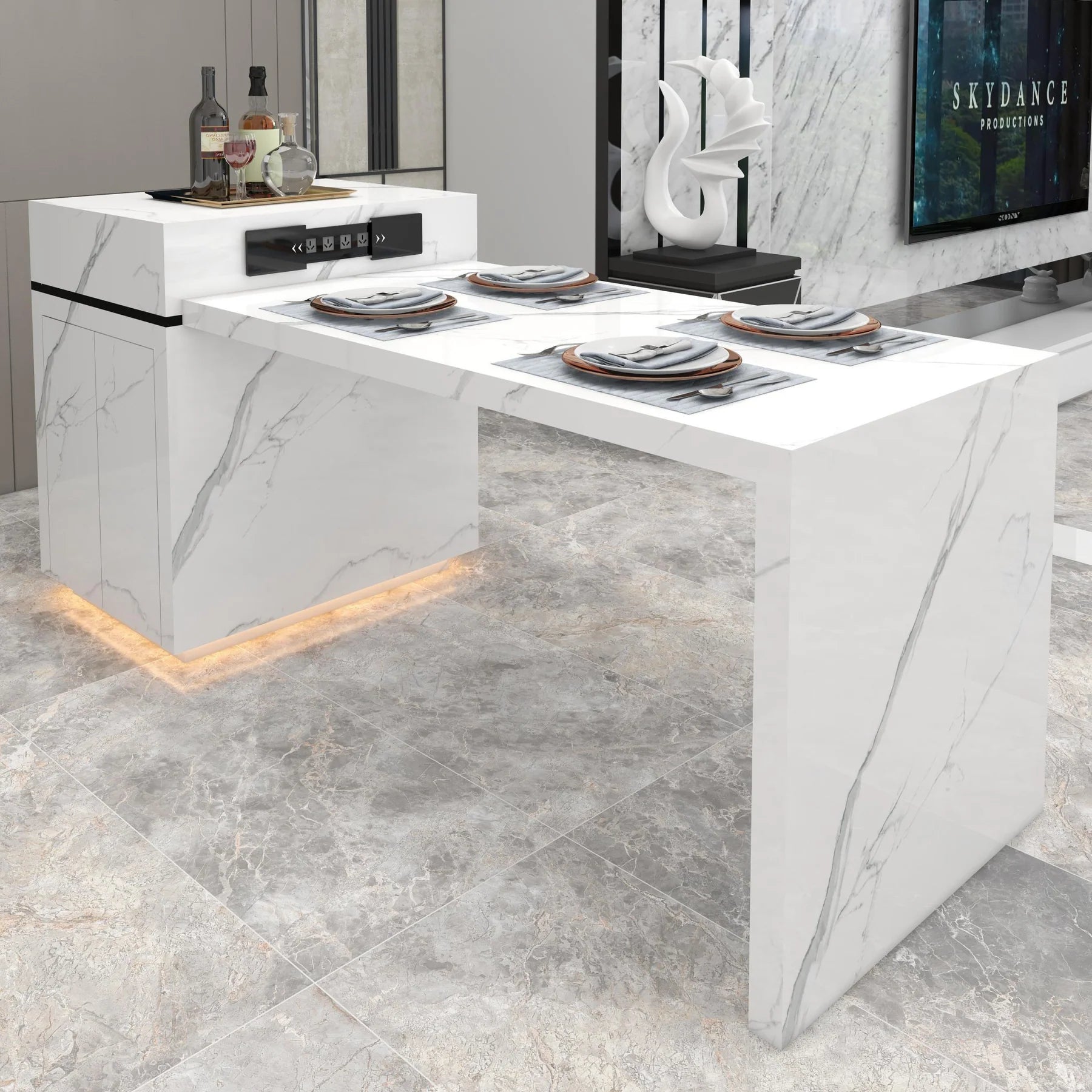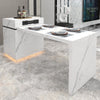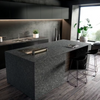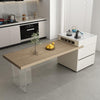Can You Use a Kitchen Island as a Dining Table?

What is a Kitchen Island?

A kitchen island is a freestanding cabinet or counter space in the middle of a kitchen. It provides extra workspace and storage. Islands come in various sizes and designs. They can include features like sinks, cooktops, or seating areas. Kitchen islands serve as multifunctional elements in modern kitchens.
Advantages of Island Tables

Increased Workspace
Island tables provide additional counter space for cooking and food preparation. This extra workspace allows multiple people to cook together comfortably and enhances overall kitchen functionality.
Enhanced Storage
Many island tables incorporate cabinets, drawers, or shelves, offering valuable storage options for cookware, utensils, and pantry items. This helps reduce clutter and keeps kitchen essentials organized.
Improved Kitchen Flow
Well-placed island tables can enhance the kitchen's workflow by creating an efficient work triangle between the sink, stove, and refrigerator.
Social Hub
Island tables serve as gathering spots for family and guests, promoting social interaction during meal preparation or casual dining.
Design Flexibility
Island tables can be customized to match various kitchen styles and personal preferences. They often become focal points in kitchen design, adding aesthetic value to the space.
Potential for Appliance Integration
Some island tables can accommodate appliances like sinks, cooktops, or wine fridges, further enhancing their functionality.

Increased Home Value
Adding a kitchen island can potentially improve a home's resale value, making it an attractive feature for potential buyers.
By combining these advantages, kitchen island tables can significantly enhance both the functionality and appeal of a kitchen space.
What's the Difference between Island Tables and Dining Tables?

Location and Design
Island tables are typically located in the center of the kitchen, while dining tables are usually placed in a separate dining area or at the edge of the kitchen. Island tables are often built-in fixtures, whereas dining tables are freestanding furniture pieces.
Size and Seating Capacity
Island tables generally accommodate fewer people, typically 2-4 seats at bar height. Dining tables can seat 6 or more people comfortably and offer conventional seating arrangements.
Functionality
Island tables serve multiple purposes:
- Food preparation area
- Casual dining spot
- Storage solution
- Appliance housing

Height and Seating
Island tables often feature bar-height seating with stools, while dining tables use standard-height chairs with backs and arms for more comfortable, extended seating.
Flexibility
Dining tables offer more flexibility in terms of placement and can be moved or extended as needed. Island tables are fixed in place and cannot be easily relocated.
Space Requirements
Island tables require specific clearance around them (38-42 inches) for proper functionality. Dining tables generally need less surrounding space, with a typical clearance of 36 inches.
Style and Formality
Island tables tend to be more casual and integrated into the kitchen's overall design. Dining tables can range from casual to formal and often serve as standalone pieces in a room's decor.
By understanding these differences, homeowners can better decide which option best suits their kitchen layout, lifestyle, and entertaining needs.
Using a Kitchen Island as a Dining Table

Functionality
Kitchen islands can effectively function as dining tables when designed properly. They provide a convenient eating area within the kitchen space.
Seating Capacity
Most kitchen islands can accommodate 2-4 people comfortably for casual dining. This makes them suitable for everyday family meals or small gatherings.
Space Efficiency
Using an island as a dining table is space-efficient, especially in smaller kitchens that may not have room for a separate dining table.
Design Considerations
To optimize an island for dining:
- Ensure adequate overhang for leg room (10-12 inches recommended)
- Provide comfortable seating with bar stools or chairs
- Include storage underneath for dining essentials

Versatility
Islands offer multi-functional benefits beyond just dining, serving as prep areas, storage, and social hubs in the kitchen.
Limitations
Some potential drawbacks include:
- Limited seating compared to full dining tables
- Less formal dining atmosphere
- May not accommodate large dinner parties

Conclusion
While kitchen islands can effectively serve as dining tables for everyday use and casual meals, they may not fully replace a dedicated dining table for all households. The choice depends on your specific needs, kitchen size, and lifestyle preferences





